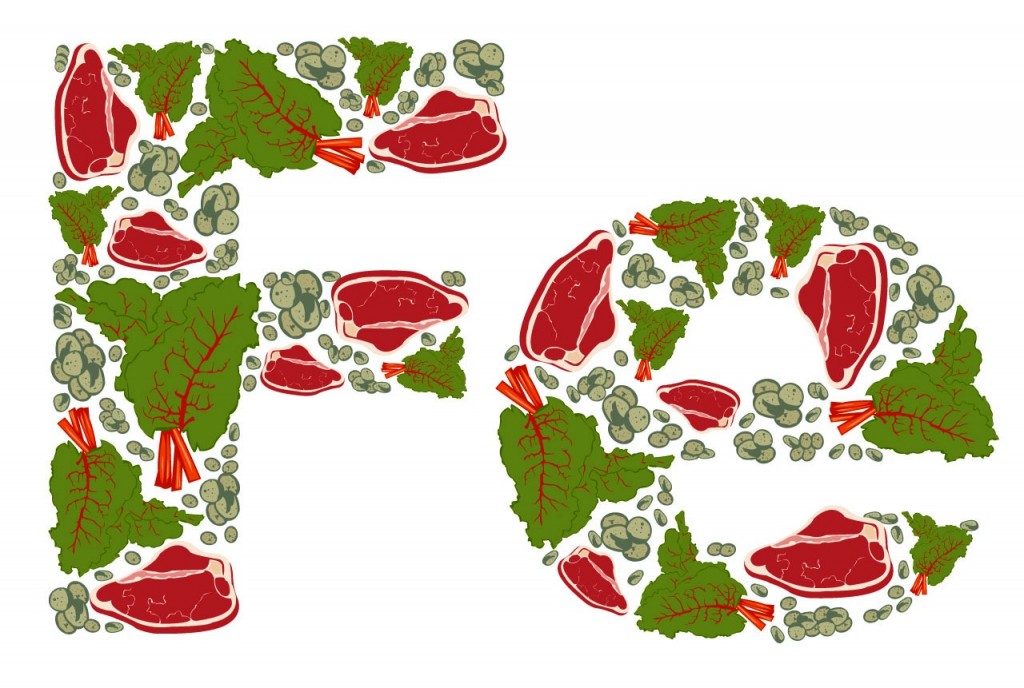Sports Nutriton
Things to Know about Iron Micronutrient and Its Deficiency
Iron is one of the most-important micro nutrients that our body requires for maintaining good health. It is known as micro nutrient because it is required in very small amounts.
As per the ICMR (Indian Council of Medical Research), recommended dietary allowance (RDA) for an adult man is 17 mg while, for women 21 mg iron is required per day.
Iron-macronutrient is considered important because it plays some of the most-vital functions in our body.
Most of the iron in the body is found in blood as hemoglobin (bound with proteins) as heme compounds. Hemoglobin is an iron-containing compound that acts as a carrier of oxygen from lungs to tissues.
It also helps to carry back carbon dioxide from tissues to lungs for exchange with fresh oxygen, because of this reason fatigue (getting tired quickly) and breathlessness, are considered to be earliest symptoms of iron deficiency.
Similar to hemoglobin, there is another compound called myoglobin that is also an iron-protein complex present in muscles that stores some oxygen for immediate use by cells when required i.e. during muscle movement. Other important functions include its role as a co-factor of enzymes and other proteins.
Although it is important for all age groups, iron is considered to be of utmost importance in special physiological conditions like pregnancy and adolescence. Daily intake of iron during pregnancy is important because, increase in total blood volume, synthesis of RBC and building up of iron stores is important for the developing fetus.
In adolescent girls, adequate intake of iron is important to maintain its balance as much of it is lost during menstrual cycles.
Absorption of iron from the intestinal tract depends on the factors like body needs, conditions existing in the intestinal lumen and the type of iron/food mixture consumed.
Factors Enhancing Iron Absorption
- Body needs- Our body has a very intelligent way of maintaining itself. Our Body requirements carefully regulate the absorption of iron from the intestines, depending upon the requirements. When the levels of Hb are low or when there is high demand, up to 35% absorption of heme iron is seen. Therefore, growing children, pregnant women and anaemic individuals have a higher rate of absorption than healthy individuals.
• Acidity-The HCl (Hydrochloric Acid) is secreted in the stomach that helps to reduce ferric iron to ferrous iron that is more soluble and is readily absorbed.
- Vitamin C –Vitamin C, also called ascorbic acid, increases the rate of absorption of iron by reducing ferric to ferrous, but it should be present in large amounts in adults, 25-30 mg of ascorbic acid in meals increases the absorption by 85%. So, next time when eating your meals add a dash of lemon, citrus fruit or a glass of juice to increase the iron absorption!
- Animal protein–MPF factor i.e. Meat, poultry and fish increases the absorption of iron 2-4 times from a meal. This happens because digestion of animal products results in the release of sulphur containing amino acids that form soluble complex with iron and increases its absorption.
• Lactalbumin and lactoferrin-Human milk has a low iron content, but the presence of lactoferrin (glycoprotein present in milk) this loss is compensated. More iron is retained by infants who are taking human milk (breast fed) than cow’s milk or other formulas. Lactalbumin also improves the iron absorption.
Now that we know the factors that help in increasing the absorption rate let us have a look at the factors that inhibit the absorption of iron.
Factors Inhibiting Absorption Of Iron
1. Low Gastric Acidity
This means reduced secretion of HCl. It can be caused due to:
1. Achlorhydria: a condition in which gastric secretion is either low or absent, especially in elderly, the absorption is lowered to as low as 50%
2. Bariatric surgeries: the surgeries in which part of the stomach is removed that produces acid mal-absorption syndromes.
2. Dietary Fiber
Very high intake of dietary fiber increases the peristaltic movement that in turn causes a reduction in the absorption of iron.
3. Phytic Acid
It is present in cereals, pulses, bran and soya products. These are phosphorus containing amino acid. The salts of phytic acid have a low solubility that interferes with the absorption of iron.
4. Oxalic Acid
It is present in green leafy vegetables like fenugreek, spinach, etc. also binds with iron and decreases its absorption by the body.
5. Other Minerals
Zinc, cobalt, copper are competitive absorption inhibitors i.e. they compete for the absorption.
Knowing About Heme And Non-Heme Iron
Iron is present in both, the foods of animal origin as well as the foods of plant origin.
Heme iron is present in hemoglobin and myoglobin in non –vegetarian food items like eggs, fish and meat while non heme is present in GLV’s, whole cereals and pulses.
As far as bio availability factor is concerned, non haem iron is not as well absorbed by the body as it is bounded by oxalates and phytates in these foods as compared to heme iron that is absorbed directly in the human gut to the extent of 60-70%.
Average absorption from animal foods i.e. heme iron ranges from 10-30% while that from plant foods it is between 2-10%.
Thus, on a mixed diet that a diet comprising of both heme and non-haem iron the absorption ranges between 5-10%.When we eat animal origin foods along with plant origin food, the absorption of iron from the plant food source improves.
Deficiency Of Iron
Deficiency of iron results in microcytic hypo chromic anaemia which means reduced red cell and hemoglobin level.
According to National Family Health Survey (NFHS) 3 data, more than 50% of women of the urban area are anaemic with almost one third of them being moderately or severely anaemic.
If you have a low iron intake, it is advisable that you take iron supplements that have high absorption rate and hence are very efficient in balancing the iron level.
I hope you found the article informative and are now more aware of your iron needs. Please share your experiences and views in the comment section below and also share this article with your friends on social media.
Dietary Sources

| Animal sources | Plant sources |
| GOOD SOURCE | |
| Egg yolk, liver and other organ meats | whole cereals and whole wheat flourmillets-bajra, jowar, ragi, rice flakes, whole pulses |
| FAIR SOURCE | |
| Meats(flesh) | Green leafy vegetables like methi, bathua, sarson, palak, mint, coriander |
| POOR SOURCES | |
| Butter, ghee, cheese | Sugars(except jiggery),fats, starchy vegetables |
Daily requirements: According to ICMR, following values have been prescribed for Indian population iron requirements for different age groups for Indians) ICMR, 2010)
| Group | Iron Requirements (mg/day) |
| Man | 17 |
| Women(NPNL) | 21 |
| Pregnancy | 35 |
| Lactation(0-6months) | 21 |
| Infants (6-12 months) | 5 |
| Children (1-3 years) | 9 |
| Children(4-6 years) | 13 |
| Children(7-9 years) | 16 |
| Adolescent boys (10-12years) | 21 |
| Adolescent girls (10-12years) | 27 |
| Adolescent boys (13-15years) | 33 |
| Adolescent girls (13-15years) | 27 |
| Adolescent boys (16-17years) | 28 |
| Adolescent girls (16-17years) | 26 |
Hope that the article has provided you with complete information on iron, and now you know the facts behind stating it to be one of the most important micronutrients!!
For any queries, please write in the comments box below.


